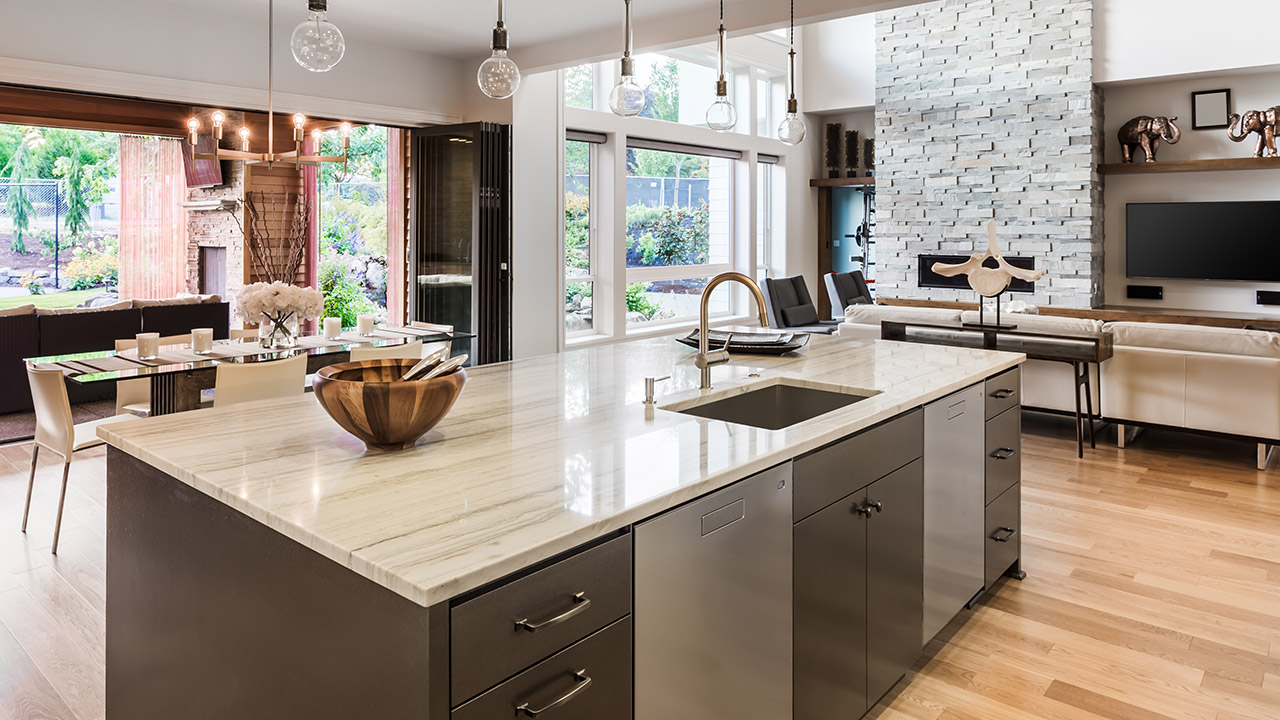Should You Put Hardwood Flooring in the Kitchen?

One of the fastest growing trends in kitchen designs is hardwood on the floors. Although tile has long been the most popular choice for practicality purposes, more and more homeowners are opting for hardwood instead.
Homeowners love the elegant and sophisticated look of hardwood. It’s warm, smooth, inviting, and doesn’t get dated as quickly as other types of flooring materials. In fact, hardwood never truly goes out of style.
But is installing hardwood flooring in the kitchen a bad idea? With all the spills and dropping of heavy utensils, is all the commotion that happens in the kitchen too much for hardwood to handle before it quickly gets worn out and ruined?
The truth is, hardwood is highly durable, it can withstand years and years of heavy use, it’s low-maintenance, and it’s even moisture-resistant if you go with a pre-finished option. If you’ve got an open floor plan, hardwood can allow you to have a more seamless flow without chopping the space up with different types of flooring in different areas of the space.
Considerations to Make Before Choosing Your Kitchen’s Hardwood Floor
It’s not hard to find a hardwood that you’ll find attractive. However, certain types of hardwood are better left for other areas of the home aside from the kitchen. Here are some things to consider before choosing hardwood flooring for your kitchen.
Species. The species of the wood determines its graining, color, and hardness. Common species include oak, maple, walnut, and cherry. For kitchens, a grainier species is ideal as it won’t show as many knicks or scratches that would be more common in the kitchen.
Texture. Aged hardwood will come with more notches, holes, grooves, and edge marks. This look can be mimicked with new wood planks through a variety of techniques, like hand-scraping, chattering, and wire-brushing. Much like wood species that are more grainy in appearance, wood that is much more textured makes an ideal choice for a kitchen, as opposed to a smooth finish.
Sheen. From matte to high-gloss, you can choose the level of sheen for your kitchen’s hardwood. Keep in mind that the glossier you go, the more easily dust, spills, and scratches will show.
Color. Hardwood comes in all sorts of colors and shades. You can go as light as blond to as dark as black. Darker shades tend to have the same effect as high-gloss finishes when it comes to showing blemishes, so take that into consideration when choosing the color for your kitchen’s hardwood.
Type of installation. Floating “click” hardwood floor planks are simple to install. Damaged boards can be easily replaced, which is ideal in a room that places a lot of stress on the floors.
Engineered Hardwood – An Ideal Choice For Kitchen Spaces
Hardwood flooring basically comes in two forms: solid wood and engineered wood. Solid wood tends to be more vulnerable to humidity and moisture, and shouldn’t be installed in damp areas, which is something you consider for your kitchen flooring.
Instead, engineered flooring is a better option for the kitchen, since it is better able to handle moisture. It’s also more durable than solid wood because of its bonded layers of hardwood in a cross-grain fashion, and can be placed on top of concrete subfloors.
The Bottom Line
Hardwood flooring can absolutely be a gorgeous addition to your kitchen. Depending on the type you select, your hardwood can be just as durable as any other type of material. While hardwood is resistant to being dated in a short period of time, you can easily give it a fresh look at some point by refinishing and staining it if you so choose. If you go with the right type of hardwood in terms of texture, color, and grain, you’ll be completely satisfied with the final outcome.